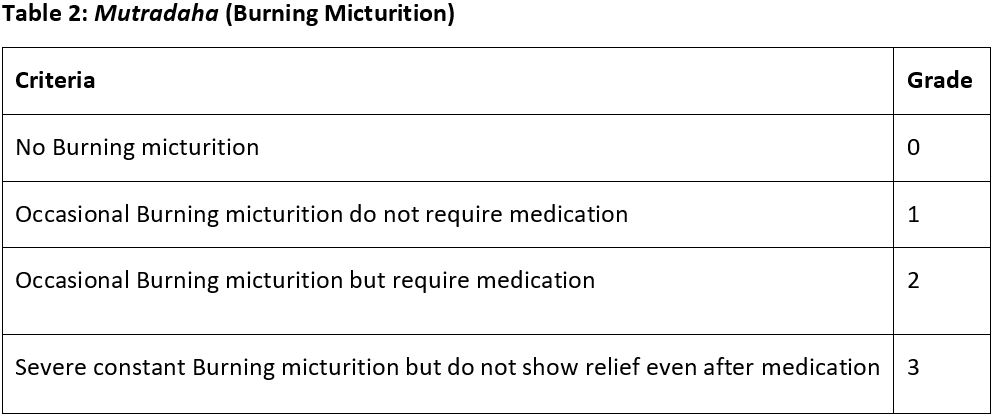Etiopathological study of Mutra Ashmari and evaluation of efficacy of Shwadranshtadi Kwath in the management of Mutra Ashmari (Urolithiasis)
DOI:
https://doi.org/10.21760/jaims.10.6.9Keywords:
Calculus, Mutrashmari, Mutravaha Srotas, Shwadranshtadi KwathAbstract
Calculus formation in human body is very common in all ethnic groups around the world, which depends upon the geographical location and nature of dietetics. The most common site of calculus formation is gall bladder and kidney. In Ayurvedic classics clear and broad description of Mutrashmari is available under the umbrella of Mutravaha Srotas which means the presence of stone in urinary system i.e. Kidney, Ureter, Urinary Bladder, and Urethra. In this study, 40 patients who were having the signs, symptoms of Mutrashamri (urolithiasis) were registered from Pt. Khushilal Sharma Government Autonomous Ayurveda College and Institute, Bhopal, and randomly selected patients were kept in a group i.e. "Clinical Trial Group". The patients were adviced for Shwadranshtadi Kwath in the dose of 30 ml with equal quantity of lukewarm water twice a day along with Nidana Parivarjan for duration of 90 days. Patients were advice to follow the dietetics as described in Ayurvedic classics.
Downloads
References
Walker R, Colledge R, Ralston N, Davidson H. Davidson's principles and practice of medicine. 22nd ed. Edinburgh: Churchill Livingstone Elsevier; 2014. Chapter 17, p. 507.
Shastri A, Kaviraj A, Sushruta M. Sushrut Samhita Ayurved Tatva Sandeepika Hindi Vyakhya Vaigyanik Vimarsha Sahita. Varanasi: Chaukhambha Publication; Reprint 2012. Nidana Sthana, Chapter 3, p. 311.
Shrivastava S. Sharngadhara Samhita Acharya Gangadhara Virachita Jivanprada Savimarsha Hindi Vyakhya Sahita. 4th ed. Varanasi: Chaukhambha Publication; 2005. Madhyam Khanda, Chapter 2, p. 135.
Kok DJ, Iestra JA, Doorenbos CJ, Papapoulos SE. The effects of dietary excesses in animal protein and in sodium on the composition and the crystallization kinetics of calcium oxalate monohydrate in urines of healthy men. J Clin Endocrinol Metab. 1990;71(4):861–7.
Curhan GC, Willett WC, Rimm EB, Stampfer MJ. Family history and risk of kidney stones. J Am Soc Nephrol. 1997;8(10):1568–73.















